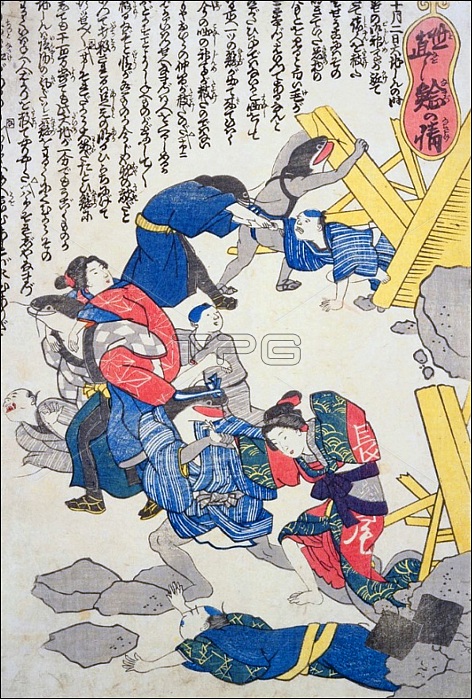
The 1855 Ansei Edo earthquake, also known as the Great Ansei Earthquake, was one of the major disasters of the late-Edo period. The earthquake occurred at 22:00 local time on 11 November. It had an epicenter close to Edo (now Tokyo), causing considerable damage in the Kant? region from the shaking and subsequent fires, with a death toll of about 7,000 people. The earthquake also triggered a tsunami. Within days, a new type of color woodblock print known as namazu-e (lit. 'catfish pictures') became popular among the residents of the shaken city. These prints featured depictions of mythical giant catfish (namazu) who, according to popular legend, caused earthquakes and related tsunami by thrashing about in their underground lairs. In addition to providing humor and social commentary, many prints claimed to offer protection as talismans from future earthquakes. The popularity of namazu-e exploded, and as many as four hundred different types became available. The phenomenon ended two months later when the Tokugawa government, which maintained a strict system of censorship over the publishing industry, forbade production. Only a handful are known to survive today.
| px | px | dpi | = | cm | x | cm | = | MB |
Details
Creative#:
TOP27038586
Source:
達志影像
Authorization Type:
RM
Release Information:
須由TPG 完整授權
Model Release:
No
Property Release:
No
Right to Privacy:
No
Same folder images:

 Loading
Loading